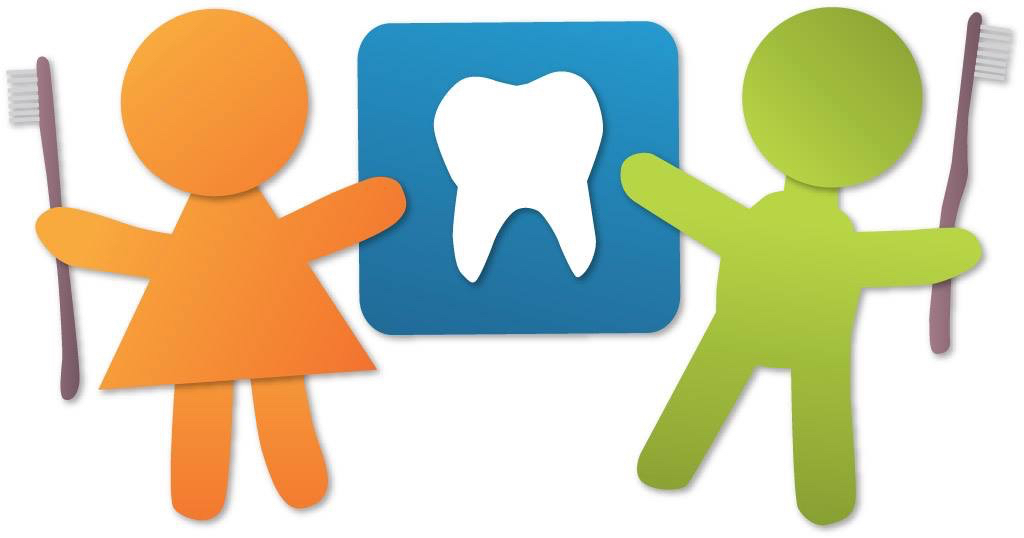How should I care for my child's teeth?
All twenty primary or baby teeth are present in your baby's jaws at birth. The lower two front teeth are most likely to be the first to erupt into your baby's mouth at around six months. Do not be alarmed or concerned if your baby is a little earlier or later than some of his/her peers. By age 3, all of your child's twenty primary teeth should be present.
Begin daily brushing as soon as your child’s first tooth appears!
Your baby's teeth and gums should be cleaned with a soft, wet gauze pad or wash cloth after each night time nursing or use of the bottle. A soft bristled toothbrush with a very small head, preferably one designed especially for infants, should be used at bedtime as your child gets older. A pea-size amount of fluoride toothpaste can be used after your child is old enough not to swallow it. We ask our parents to help with at least one brushing a day until age six, and then supervise brushing until your child learns to do a thorough job, around 7-10 years of age. Proper brushing of your child's teeth removes plaque from the inner, outer, and chewing surfaces of his/her teeth.
How To Brush
1. Use a extra soft or soft bristle toothbrush, or a electric toothbrush such as a Walgreen's rotating toothbrush.
2. Hold your brush at a 45 degree angle towards the gums. The bristles should contact both the teeth and the gums.
3. Gently brush the outer tooth surfaces of 2-3 teeth using a gentle circular motion. Move the brush to the next group of 2-3 teeth and repeat.
4. Repeat the same motion on the inside surfaces of all the teeth.
5. Brush the inside surfaces of the front teeth by tilting the brush vertically with gentle, short up and down brush strokes.
6. On the chewing surfaces, hold the brush flat and use a gentle scrubbing motion. Don't forget to brush your child's tongue to keep his/her breath fresh.
7. Remember to replace your toothbrush at least every 3-4 months.
How To Floss
1. Wrap the ends of a 18 inch to 24 inch section of floss around your middle fingers.
2. Hold the floss between your thumbs and forefingers. Leave about 1 inch of floss between your hands.
3. Gently work the floss between your teeth. When you reach the gumline, curve into a "C" shape around the tooth, making sure to go below the gumline.
4. Gently glide the floss up and down several times between each tooth, including your back teeth. Apply pressure against the tooth while flossing. Unwind new floss as needed.
Flossing removes the plaque between your child's teeth where the bristles of the toothbrush cannot reach. Help your child floss until around the age of 10 or 11 or until he/she is able to floss correctly by himself/herself. Floss between all of your child's teeth, starting from the back and then coming forward. Use a gentle, up and down movement between the gums and the sides of your child's teeth. Disposable flossers can be purchased at your local drug store.
If your child has gingivitis, his/her gums may bleed for the first week until the plaque layer is broken up, the bacteria are removed, and his/her gums heal. Gingivitis is an inflammation of the gums which is reversible by proper brushing and flossing.
- Don't forget to floss the back sides of your child's last four teeth
- Rinsing with a mouth rinse is a great way to reduce plaque, to help keep your child's gums healthy, and to combat bad breath
- You want to pick a mouth rinse for your child and yourself that you would like to use twice a day - in the morning and in the evening
- When your child rinses, have him/her swish the rinse around in his/her mouth for about 30 seconds
- Remember, mouth rinses are not intended to replace brushing or flossing
Doctor Wang, Doctor Perea-Corkish, Doctor Gerodias and the other Doctors of Discovery Pediatric Dentistry make no warranties, expressed or implied, as to any results to be obtained from use of the information on this page. We cannot diagnose or treat patients over the Internet. Information on this site is for educational purposes only. You should not rely on this information as a substitute for personal, medical, and/or dental attention or diagnosis. Without all available information about a patient, it is impossible to make a diagnosis. Help and answers are in the form of general ideas. Only you, your dentist, and other necessary and qualified health care providers can make an appropriate treatment decision in an emergency or for everyday care and dental treatment.
